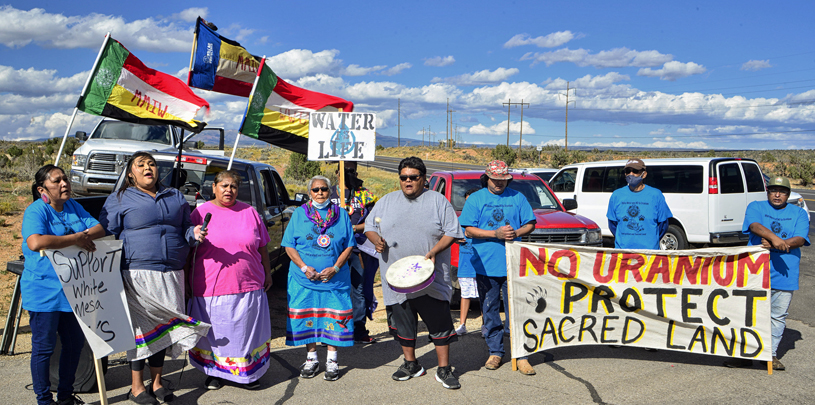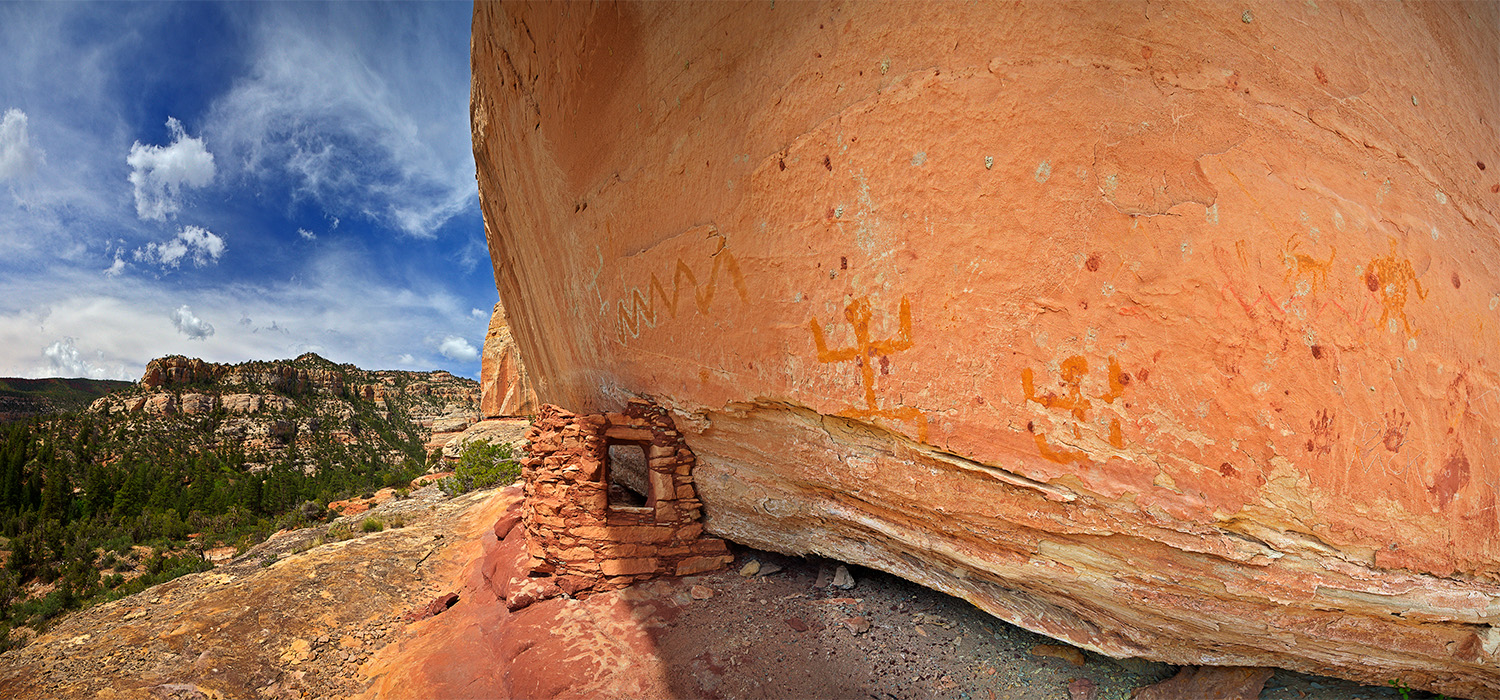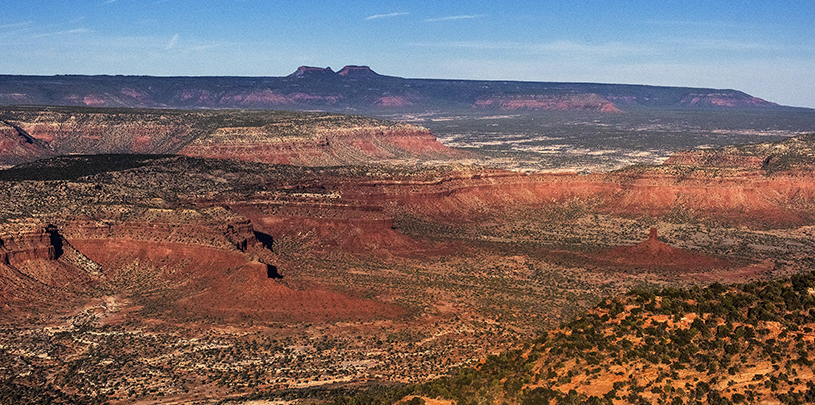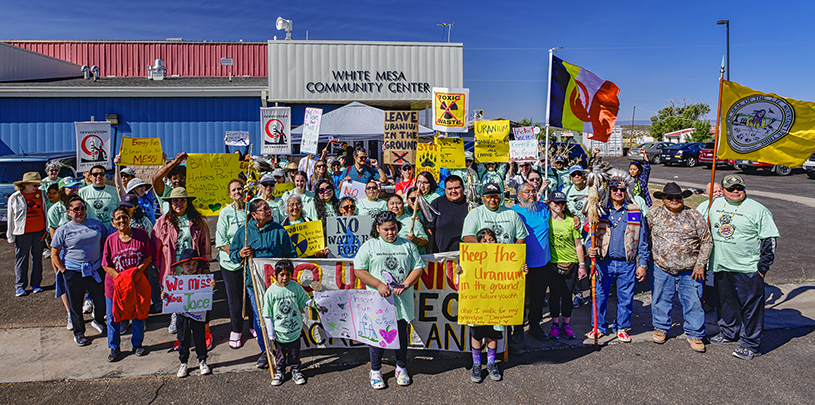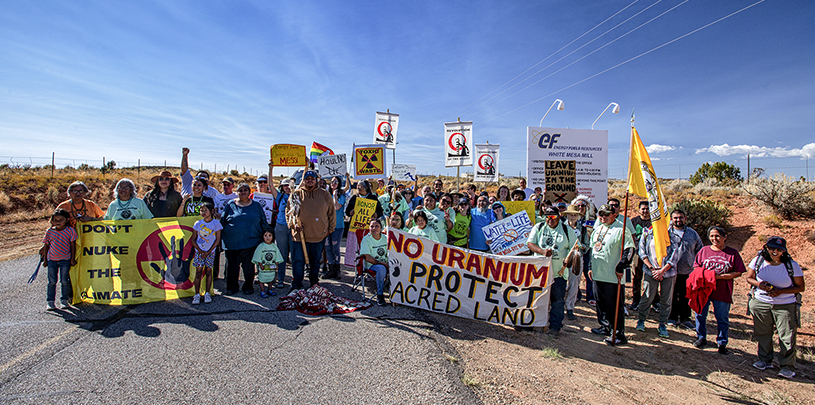
On October 9, 2021, the day after President Biden restored full protections to Bears Ears National Monument, concerned citizens gathered in a parking lot in the small Ute Mountain Ute reservation community of White Mesa, Utah. Together, advocates from the Diné (Navajo), Gila River, Hopi, Chemehuevi, and Tewa nations, and their supporters, set out on a spiritual walk led by the local Ute community to protest the nearby White Mesa Mill, a notorious uranium mill a mile from the monument’s eastern boundary.
With Bears Ears restored, action at White Mesa Mill needed next

“We celebrated yesterday, but today we fight,” former Ute Mountain Ute tribal councilwoman, Regina Lopez-Whiteskunk, told the crowd when they arrived at the mill turnoff, Bears Ears National Monument visible in the background.
“As Indigenous people, that’s been our every day,” Lopez-Whiteskunk continued. “That’s been our every day for our ancestors, it’s been our every day for our elders…Even when we have a moment to celebrate, the next moment we have to fight for something else.”
Lopez-Whiteskunk was speaking from personal experience as a founding member of the Bears Ears Inter-Tribal Coalition, whose original proposal led to the creation of Bears Ears National Monument. The next goal Lopez-Whiteskunk sees to ensure long-term protection for this living cultural landscape is to close and clean up the White Mesa uranium mill, which threatens the local Ute community’s water, air, health, and culture.
Tribal concerns about contamination have been magnified in recent years following controversial decisions by the state of Utah to allow radioactive wastes from as far away as Estonia and Japan to be processed and disposed of at the rural uranium mill. The state has also allowed the mill to begin processing rare earth elements.
Tribal members concerned about kids, water, air quality

“It’s hard to live in the community where you’re close to a…mill that’s contaminated,” Yolanda Badback, leader of the local Ute group, White Mesa Concerned Community, acknowledged. “It’s hard, but we do it every day. Every day we survive…and we’ll continue surviving until we get [regulators] to close this [mill] or get it cleaned up.”
“What we’re fighting against is, it’s a monster,” said Ute community member Michael Badback, sharing his concerns about radioactive materials spilling on the highway that runs through town, as has happened in the past. “We have kids that are communicated from school, back and forth on these roads…My grandson rides the bus…What are you going to do when a big accident happens here and the kids go through there on the bus?”
Badback also shared his anxieties about contamination and potential leaks from the mill’s waste pits. “I’ve seen animals killed in that water…our water is precious to us. What’s going to happen if our water gets affected by this?” He asked, explaining that community members no longer hunt rabbits in the area, because of fear of contamination.
“When winter comes, when the smokestacks are going, we’re downwind from this, and we can smell it…It’s got an awful smell. It blows south, to where we live,” Badback said, community members nodding in recognition. “It’s our kids that are going to get affected…the kids are starting to get asthma. Nobody knows where it’s coming from. They never had asthma before.”
Tribal members share messages of resilience, hope

Despite these fears, tribal members pledged to remain committed to protecting their community from the mill.
Silverton House-Whitehorse traveled from the Ute Mountain Ute reservation in Towaoc, Colorado to show solidarity with Ute relatives in White Mesa. He urged citizens to contact their elected officials, saying, “the Congress, the Senate, the United States president do work for us, and we need to remember that and remind them what affects us in these communities. Though we may be out in the middle of nowhere, this middle of nowhere supports an ecosystem of living human beings, of animals, of the air that we breathe, the water that we drink.”
Davina Smith shared her own family’s experience of working in the uranium industry and drinking water contaminated with uranium on the Navajo Nation, and well as the legacy of cancer that followed. Smith had just completed a prayer run from Bears Ears National Monument to Salt Lake City carrying medicine herbs she had collected. “I carried this on my back for a form of prayer,” she explained, removing the pouch of herbs from her backpack. “Look what happened…we got restored for Bears Ears.” Normally Smith would return the herbs to the San Juan River, but she felt moved to bring them to the spiritual walk first. “That is my wish, that we either close this place down or we get it cleaned up,” she said.
Ute elder and master basket maker Thelma Whiskers encouraged young advocates to remain strong. “Stand on your feet,” she told them. “Don’t let these white people run over you guys…Let’s be strong…I know we can do it…I was so happy to hear about the Bear Ears,” Whiskers recalled, smiling. “This is what’s going to happen to this place [the mill] up here. They’re going to clean this place up. We’re going to be living in a good, fresh air…We’re going to keep fighting for it, keep fighting. We’re not going to give up.”

